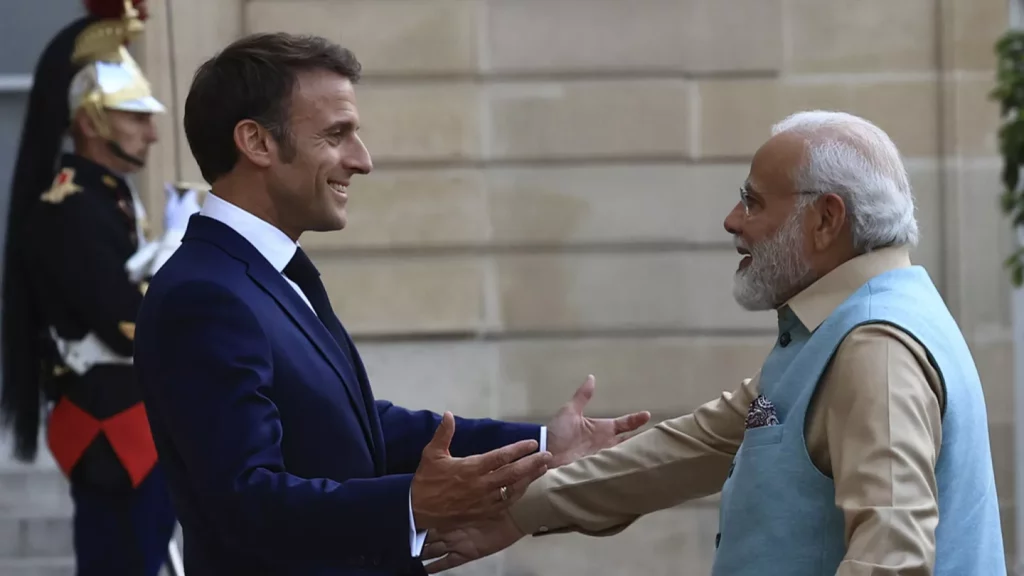Beyond the immediate procurement transactions, the collaboration includes the participation of French companies in India’s indigenous nuclear attack submarine programme and the TEDBF programme for a carrier-based fighter aircraft. Both of these initiatives are part of the TEDBF programme. These alliances have the goals of bolstering defence capabilities, promoting technology cooperation, and establishing a long-term strategic connection with one another. Girish Linganna has some reporting to do.

A purchase agreement between India and France for three Scorpène submarines and 26 Rafale aircraft for the Indian Navy is very close to being finalised. During Prime Minister Narendra Modi’s current diplomatic trip to France, there will reportedly be an official declaration made over the matter. On Thursday, Modi is scheduled to arrive in France in order to participate in the festivities commemorating the storming of the Bastille. This coming Friday, he is going to have dinner with Emmanuel Macron, who is the current President of France.
If the defence agreement is finalised, this purchase will be placed in addition to the initial order that India placed with the aircraft manufacturer in 2016 for 36 “off-the-shelf” (manufactured in France) Rafale fighters. That order was placed for 36 planes. Eric Trappier, Chief Executive Officer of Dassault Aviation, made a statement at the beginning of this year indicating that the selection of their aircraft by the Indian government would be an obvious and reasonable choice.
As of the end of 2022, Dassault Aviation’s order backlog for the Rafale comprised of 164 units, with 39 aircraft earmarked for France and 125 aircraft destined for export. France was expected to take delivery of 39 of the aircraft. This year, the corporation plans to manufacture 15 planes, of which 14 will be sent to France and the remaining one will be delivered to Greece. Dassault Aviation is now expanding its production capacity, and the possibility of receiving further orders may make it possible for the corporation to keep up a higher production pace throughout the course of time. In its production chain, Dassault Aviation, like other aircraft manufacturers, is having some issues as of late.
“The ongoing impact of COVID and supply shortages related to the conflict in Ukraine have put constraints on many logistics and supply chains, so our supply chain is facing challenges,” Eric Trappier stressed back in March. “Our supply chain is facing challenges because of the ongoing impact of COVID and supply shortages related to the conflict in Ukraine.” The goal of Dassault Aviation is to produce three Rafale jets every single month at their current production rate.
In terms of potential orders, the Rafale may still have access to alternative opportunities. Although Colombia had already made its choice of fighter jet for a possible order of 16 aircraft, the two parties were unable to come to an agreement by the time the year 2022 came to a close. It is currently unknown whether or not this will be brought up to this year. Due to the fact that Dassault Aviation has only been awarded a definite contract for six aircraft, Indonesia, on the other hand, has the ability to activate the remaining part of its order for 42 aircraft.
Encouragement of the Nuclear Attack Submarine and the TEDBF
Notwithstanding this, the ramifications of military and industrial collaboration between New Delhi and Paris may reach farther than these spectacular and extensively documented statements.
Everything points to the fact that the Naval Group and the French naval industrial base will actively support the development of India’s first indigenous nuclear attack submarine (SSN) programme. This support will take the form of significant technology transfers to make these vessels as capable and stealthy as possible, and it will occur in conjunction with the acquisition of three additional Scorpene submarines.
Increasingly, people are talking about a second hypothesis that involves the potential future collaboration of engine manufacturer Safran in the Twin Engine Deck Based Fighter (TEDBF) programme, which is the programme being run by the Indian Defence Research and Development Organisation (DRDO) to develop a new twin-engine carrier-based fighter aircraft.
The goal of this collaboration is to develop a brand-new turbojet engine that is able to provide 12 tonnes of thrust for an aeroplane that weighs 26 tonnes. These programmes place an emphasis on India and France expanding their defence connections. These links go beyond immediate procurement transactions and encompass long-term strategic cooperation in the development of defence technology and innovation.
It is projected that the TEDBF will enter service in the year 2035, at which time it will replace the MiG-29 aircraft that are now stationed on the INS Vikramaditya, which is a 45,000-ton aircraft carrier that was purchased from Russia and repaired by Indian shipyards to enter service in 2014. In addition to this, it is planned that the TEDBF will outfit a third possible aircraft carrier, which was made public a few months ago.
Despite this, it’s possible that Safran isn’t the only French company participating in the TEDBF scheme. In a manner analogous to the potential role that the Naval Group will play in the development of the Indian SSN programme, Dassault Aviation may also work in conjunction with the Indian aerospace sector to design and develop this aircraft.